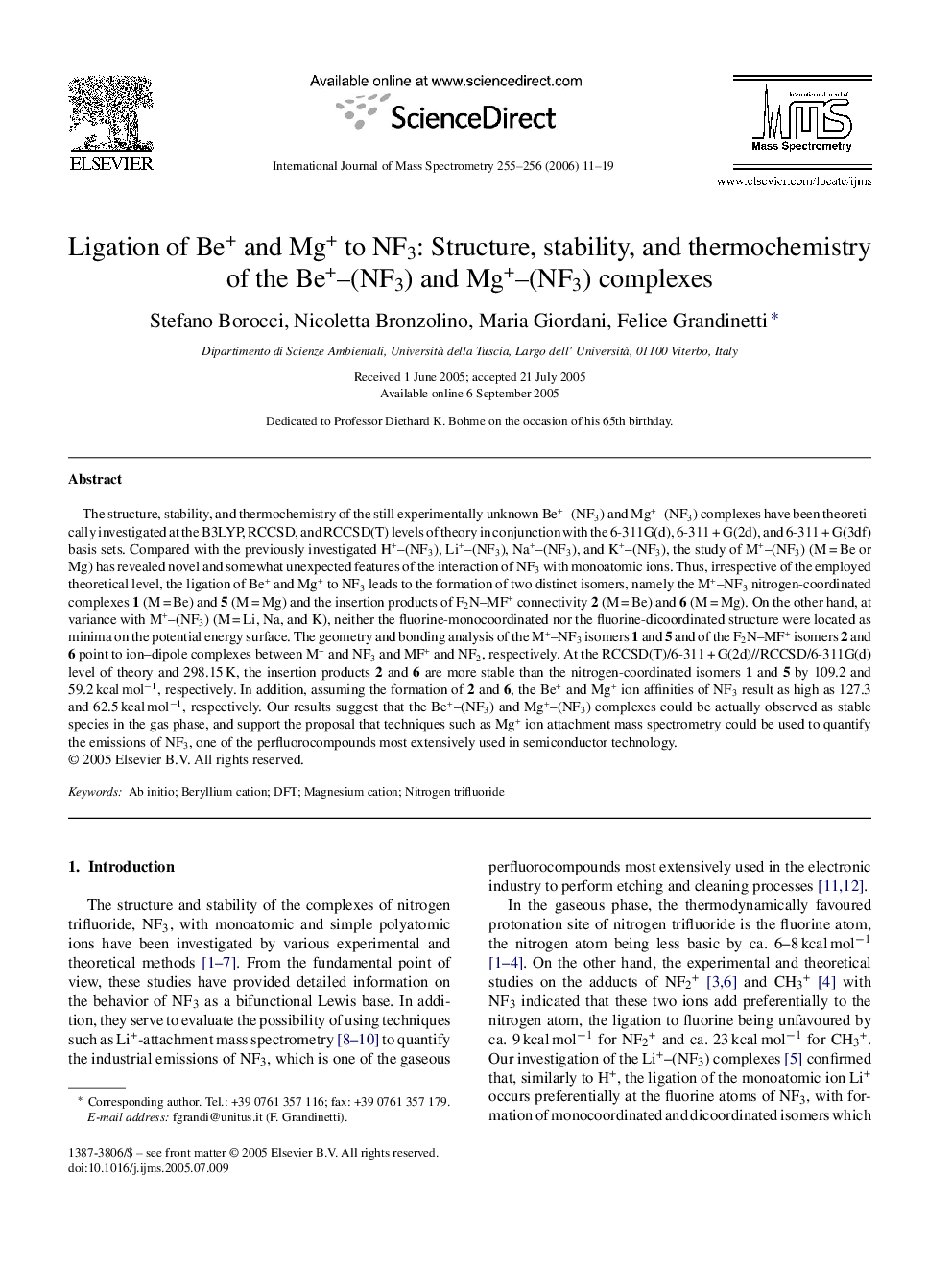| Article ID | Journal | Published Year | Pages | File Type |
|---|---|---|---|---|
| 1194717 | International Journal of Mass Spectrometry | 2006 | 9 Pages |
Abstract
The structure, stability, and thermochemistry of the still experimentally unknown Be+-(NF3) and Mg+-(NF3) complexes have been theoretically investigated at the B3LYP, RCCSD, and RCCSD(T) levels of theory in conjunction with the 6-311G(d), 6-311 + G(2d), and 6-311 + G(3df) basis sets. Compared with the previously investigated H+-(NF3), Li+-(NF3), Na+-(NF3), and K+-(NF3), the study of M+-(NF3) (M = Be or Mg) has revealed novel and somewhat unexpected features of the interaction of NF3 with monoatomic ions. Thus, irrespective of the employed theoretical level, the ligation of Be+ and Mg+ to NF3 leads to the formation of two distinct isomers, namely the M+-NF3 nitrogen-coordinated complexes 1 (M = Be) and 5 (M = Mg) and the insertion products of F2N-MF+ connectivity 2 (M = Be) and 6 (M = Mg). On the other hand, at variance with M+-(NF3) (M = Li, Na, and K), neither the fluorine-monocoordinated nor the fluorine-dicoordinated structure were located as minima on the potential energy surface. The geometry and bonding analysis of the M+-NF3 isomers 1 and 5 and of the F2N-MF+ isomers 2 and 6 point to ion-dipole complexes between M+ and NF3 and MF+ and NF2, respectively. At the RCCSD(T)/6-311 + G(2d)//RCCSD/6-311G(d) level of theory and 298.15 K, the insertion products 2 and 6 are more stable than the nitrogen-coordinated isomers 1 and 5 by 109.2 and 59.2 kcal molâ1, respectively. In addition, assuming the formation of 2 and 6, the Be+ and Mg+ ion affinities of NF3 result as high as 127.3 and 62.5 kcal molâ1, respectively. Our results suggest that the Be+-(NF3) and Mg+-(NF3) complexes could be actually observed as stable species in the gas phase, and support the proposal that techniques such as Mg+ ion attachment mass spectrometry could be used to quantify the emissions of NF3, one of the perfluorocompounds most extensively used in semiconductor technology.
Related Topics
Physical Sciences and Engineering
Chemistry
Analytical Chemistry
Authors
Stefano Borocci, Nicoletta Bronzolino, Maria Giordani, Felice Grandinetti,
